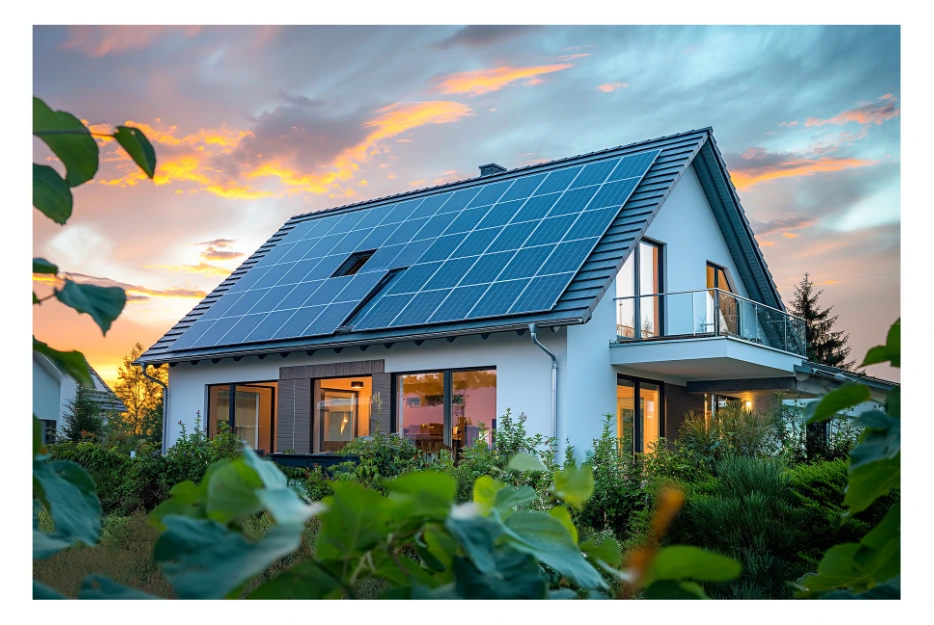Transforming Period Properties: The Complete Guide to Internal Wall Insulation for Heritage Homes
There’s an undeniable charm to period properties. From Victorian terraces to Edwardian semis, these homes radiate craftsmanship and history that modern builds often can’t match. Yet, behind their beautiful façades and elegant sash windows lies a familiar problem — solid walls that simply weren’t designed for modern energy efficiency.
If you’re tired of choosing between preserving your home’s character and achieving real comfort, internal wall insulation (IWI) could be the perfect solution.
Understanding the Solid Wall Challenge
Homes built before 1920 were typically constructed with solid walls — either a single layer of brick or stone, or two layers with no cavity between them. While this construction method has stood firm for over a century, it presents some serious thermal drawbacks.
The Physics of Heat Loss
Solid walls act as thermal bridges, transferring warmth from inside your home directly to the outside world. Unlike modern cavity walls, which can be easily filled with insulation, solid walls offer no such gap. The result?
Up to 45% of your heating energy could be escaping through your walls.
Cold spots and draughts persist, no matter how efficient your heating system is.
Walls feel cold to the touch, even when the air temperature is warm.
Condensation and damp can form during colder months.
The Comfort Conundrum
Owners of period homes often notice:
Rooms that never feel properly warm, no matter how high the thermostat goes.
Uneven temperatures between different parts of the house.
Cold draughts that seem to appear from nowhere.
A “thermal shock” when moving from newer, insulated extensions to the original rooms.
Beyond Energy Bills: The Complete Benefits of Internal Wall Insulation
While lower heating costs are an obvious advantage, the benefits of quality IWI go far beyond your energy bills.
Enhanced Living Comfort
Eliminate Cold Bridging: Say goodbye to those chilly corners that make certain spots uncomfortable.
Even Temperatures: Enjoy consistent warmth from floor to ceiling.
Reduced Draughts: Proper sealing keeps warm air in and cold air out.
Warmer Surfaces: Walls feel pleasantly warm, improving comfort even at lower temperatures.
Preservation and Enhancement
Protect Historic Character: Unlike external insulation, IWI preserves your home’s original appearance — ideal for listed buildings and conservation areas.
Improve Air Quality: By reducing condensation, IWI helps prevent mould and mildew, supporting better respiratory health.
Safeguard the Structure: Warmer walls mean less risk of frost damage or damp penetration.
Noise Reduction: Added insulation layers also help block external noise for a quieter home.
Financial Advantages
Substantial Savings: Many homeowners see up to 30–45% reductions in heating costs.
Higher Property Value: Improved EPC ratings make your home more appealing to buyers.
Lower Maintenance: Fewer damp and mould issues mean less frequent redecoration.
Futureproofing: Stay protected from rising energy prices and future carbon levies.
Addressing Common Concerns for Heritage Homes
Many period homeowners worry about how insulation might impact their property’s character or condition. Here’s the truth:
“Will it cause damp problems?”
When installed correctly, IWI includes vapour control layers and careful detailing to manage moisture. In fact, keeping walls warmer helps reduce condensation and prevent damp.
“What about original features?”
Experienced installers can work around decorative details like cornices, fireplaces, and mouldings — ensuring your period charm remains intact.
“Will it make my rooms smaller?”
Modern insulation systems are slimline. A typical 100mm installation only reduces a room’s volume by around 2.5%, a small trade-off for a huge comfort gain.
“Is it suitable for listed buildings?”
Yes — with proper planning and approval from conservation officers. Because IWI is installed internally, it’s often more acceptable than external insulation.
The Professional Assessment: What to Expect
To know whether internal wall insulation is right for your home, a professional assessment is essential. This process typically includes:
Initial Survey
Analysis of wall type and condition
Identification of any damp or structural issues
Measurement of current thermal performance
Evaluation of your existing heating efficiency
Technical Considerations
U-value calculations to determine ideal insulation thickness
Condensation risk analysis
Airtightness planning
Integration with your home’s existing features and services
Practical Planning
Recommendations for insulation type (boards vs stud wall systems)
Timeline and disruption management
Cost-benefit analysis and funding options review
Making IWI Work for Your Period Property
A successful installation in a heritage home requires experience, precision, and respect for traditional materials.
Breathability Matters
Match insulation materials to your wall’s natural properties
Maintain adequate ventilation
Use vapour-permeable materials where appropriate
Detail Design
Careful junction treatment at floors, ceilings, and corners
Attention to areas around windows and doors
Integration with original architectural features
Quality Installation
Choose contractors experienced in period properties
Maintain clear sequencing to minimise disruption
Conduct ongoing quality checks throughout the project
Life After Installation: What Homeowners Experience
Those who’ve added internal wall insulation to their heritage homes consistently report transformational results.
Immediate Benefits
Noticeable warmth within hours of completion
Elimination of cold draughts and cold spots
Reduced heating system runtime and energy use
Long-Term Advantages
Consistently lower energy bills
Year-round comfort and better air quality
Healthier living conditions with fewer respiratory issues
Unexpected Bonuses
Quieter rooms thanks to soundproofing effects
Reduced dust and airborne particles
The ability to enjoy previously “unusable” cold rooms year-round
Take the First Step
If you’re ready to transform your period property from draughty to delightful, start with a professional insulation assessment.
At Apex Nationwide, we specialise in helping heritage homeowners achieve exceptional comfort and energy efficiency — without compromising the character that makes your property unique.
Don’t let another winter pass with you choosing between style and warmth. Discover how Apex Nationwide can help you enjoy the period home you love — with the modern comfort you deserve.

 Call Anytime +44 7424 950494
Call Anytime +44 7424 950494



